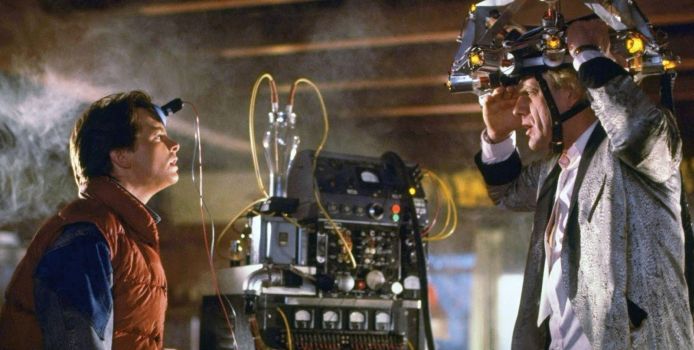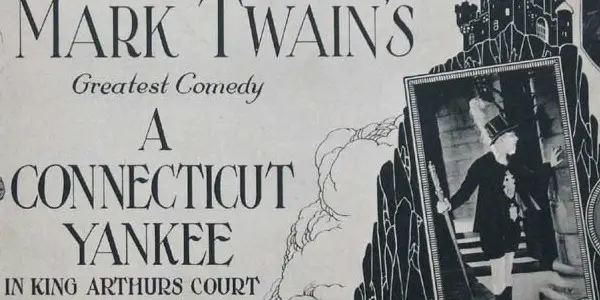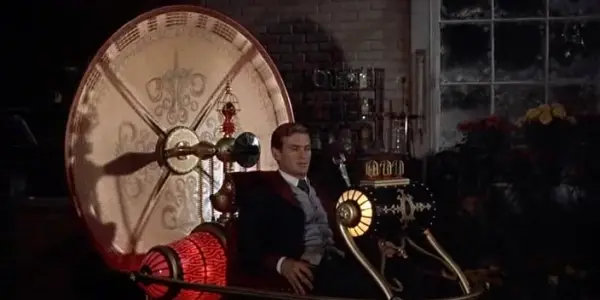1.21 Gigawatts: The History of Time Travel in Cinema

Sam is an English Literature student at the University of…
In some ways, the cinema is the closest thing we can experience to travelling through time – certainly the closest of any art form. In the dark room of a movie theatre, an audience can be transported to the distant past or spectacular visions of the future, and even in watching films from the 30’s and 40’s we can look at the lives and faces of people who died many years ago.
Time travel became popular as a literary device with HG Well’s The Time Machine – published in 1895, the same year that the Lumière Brothers made Arrival of a Train at La Ciotat. So time travel and cinema entered the public consciousness at the same time, and it has a long and fascinating history as a cinematic device. While rooted in science fiction, it has flitted around a variety of genres and even today filmmakers are exploring new ways to tell stories with it. Time travel is one of the most popular and interesting tropes in cinema and in this article we’ll look at how it’s developed through, well, time.
Early Days
The earliest example of time travel in cinema dates to a 1921 adaptation of the Mark Twain story A Connecticut Yankee in King Arthur’s Court, of which only 3 of 8 original reels remain today. The film shows an American who dreams he is transported back to the time of King Arthur and defeats his foes using his contemporary knowledge.

The success of this silent inspired a sound remake in 1931 and a musical starring Bing Crosby in 1949. A Connecticut Yankee set the formula for other travel films of this era – the hero is typically whisked back against his own will to the past, where he engages in adventures and falls in love with a beautiful woman. Examples include I’ll Never Forget You (1951) and Berkeley Square (1933), which both send their hero to the 18th century.
It’s clear to see the appeal for audiences of the time, who could find new enjoyment through identifying with a contemporary protagonist in the for the escapist historical adventures that were popular at the time. At this point, then, the time travel itself was merely a device to get the character into the period setting, and fairly unimportant to the plot. These early experiments were firmly in the realm of fantasy – but this would change with the rise of science fiction in the 1950’s and beyond.
Developing ideas
The first year of the 60’s saw one of the most significant time travel films: George Pal‘s adaptation of The Time Machine, the novel that started it all. The Victorian setting of the original novel remains, as a British inventor (named H.G. Wells in tribute) travels to the year 802,701, where far-future human descendants are hunted by subterranean Morlocks. The Time Machine was in some ways hugely ahead of its time, most significantly in the Oscar-winning visual effects, which use a combination of time-lapse photography and stop motion animation to depict flowers blooming, candles melting and the sun arcing across the sky in a matter of seconds.

Here we can see the visual potential of the time travel film come to fruition, in a way that only the cinema medium can provide. But more importantly Pal‘s film updated the novel to provide an ominous social commentary, as Wells witnesses a nuclear holocaust on his journey to the future – dated at 1966, just 6 years after the film’s actual release. This, then, was an early example of using time travel to say something about the present; in this case, the fear of nuclear annihilation at the height of the Cold War.
A similar concept can be seen in a lesser known piece, the experimental French film La Jetee (1962). In this 28 minute short, which is constructed almost entirely from a series of photographs, a man from a post-apocalyptic Paris is chosen to be sent back before World War Three to warn the people of the past about the future. A key inspiration for the plot of Terry Gilliam’s Twelve Monkeys, it remains one of world cinema’s first and most significant forays into time travel.
Time travel breaks out
The 70’s were something of a bleak era: Wikipedia lists just seven time travel films for the whole decade, and two are sequels to Planet of the Apes, in which time travel is only used incidentally. But the 1980’s saw an explosion of popularity for the genre, and many of its most famous movies come from this time. Much of this stems from the huge success of 1984’s The Terminator.

The iconic Terminator character is what launched the careers of James Cameron and Arnold Schwarzenegger, which may be a good or terrible thing for the history of cinema, but the inventive plot – a robot from the future sent back to kill the future mother of a resistance fighter -showed us that the protagonist doesn’t have to travel at all; it’s the antagonist from a future environment who arrives in the present. The Terminator was released just months before one of the biggest films and franchises of the decade became perhaps the definitive image of time travel on screen: the still ridiculously enjoyable Back to the Future.
Robert Zemeckis and Bob Gale mined the comic potential of the genre by sending an 80’s teenager back to 1955 – via, of course, a beaten up DeLorean – where he attracts the friendship of his geeky dad and the romantic attention of his mother. It’s the culture clash that results from a gap of 30 years, instead of hundreds, that makes this film so effective; far away enough to be alien, but close enough to be recognisable. And despite being firmly entrenched in 80’s culture, the film manages to avoid feeling dated by embracing the atmosphere of the decade so well that it feels like a loving tribute rather than what was, at the time, present day. The appeal of seeing Marty McFly interacting with all the 50’s stereotypes and considering how you would react to watching your own dad get bullied or your own mother trying to flirt with you turned Back to the Future into one of the most successful films of the 80’s.
The effect of this success was instant, inspiring other films to use time travel as a device for comedy rather than adventure, or simply to spice up existing concepts and tropes. High school comedy Peggy Sue Got Married (directed by Francis Ford Coppola of all people) and slacker cult classic Bill and Ted’s Excellent Adventure were huge hits; Star Trek IV saw the crew of the Enterprise beam down to 1986. Meanwhile both Terminator and Back to the Future were establishing themselves in popular culture with a slew of sequels – many consider Terminator 2 to be even better than the original, and Back to the Future Part 2 was so popular that Marty and Doc’s visit to 2015 is going to be immortalised all year.
Present Day
After time travel became such a popular plot device in mainstream cinema in the 80’s, the films of the next few decades continued to explore more inventive and artful ways to use it. The previously mentioned Twelve Monkeys took the idea of a time traveller coming to warn us of the future, only to be assumed insane; Shane Carruth’s impenetrable Primer, about an accidentally created time machine and shot for just $7,000, has earned a reputation as one of the most cerebral and confusing science fiction films ever.
So where does it go from here? Time travel is being increasingly used in modern cinema – from thrillers like Source Code and Edge of Tomorrow, which use the concept of time loops, the protagonist reliving the same period of time repeatedly, blockbusters like X-Men: Days of Future Past and even Woody Allen comedies (2011’s Oscar winning Midnight in Paris).

Last year, Christopher Nolan’s Interstellar presented perhaps the most realistic representation of time travel yet from a scientific perspective. Using real concepts of gravitational time dilation the film saw its characters experiencing time at different rates depending on their relative position to a black hole – a scenario that would actually happen if we found ourselves too close to one. But then, can such concepts be described as time travel at all if they’re rooted in real science?
The genre – and with 6 mainstream American films using time travel in 2014, it is time for it to be considered a genre – has proven over a century to consistently provide ideas and narratives that capture audiences, and can translate itself to action, drama and comedy with equal success. There is clearly something encased in the simple idea of a protagonist travelling to another point in time that captures the attention and imagination of cinema audiences, and there is endless potential for more. If only we could travel to the future and see where it’s at in 30 years time.
What is your favourite use of time travel in film? Let us know in the comments!
(top image: Back To The Future – source: Universal Pictures)
Does content like this matter to you?
Become a Member and support film journalism. Unlock access to all of Film Inquiry`s great articles. Join a community of like-minded readers who are passionate about cinema - get access to our private members Network, give back to independent filmmakers, and more.
Sam is an English Literature student at the University of Sheffield. He likes film, writing, and writing about film. He didn't think Prometheus was that bad.













